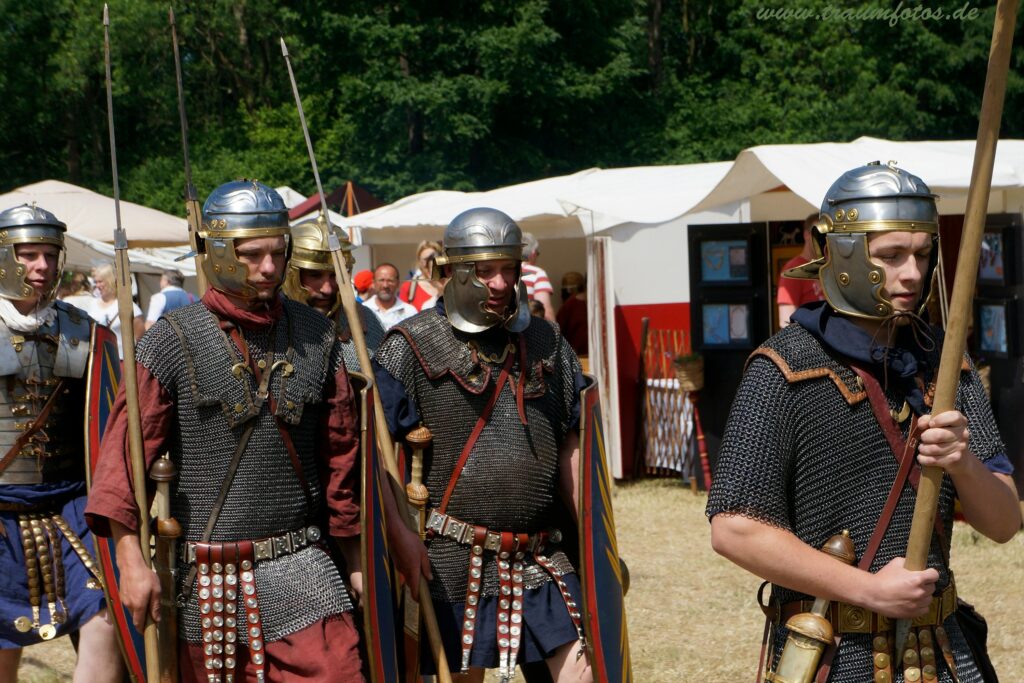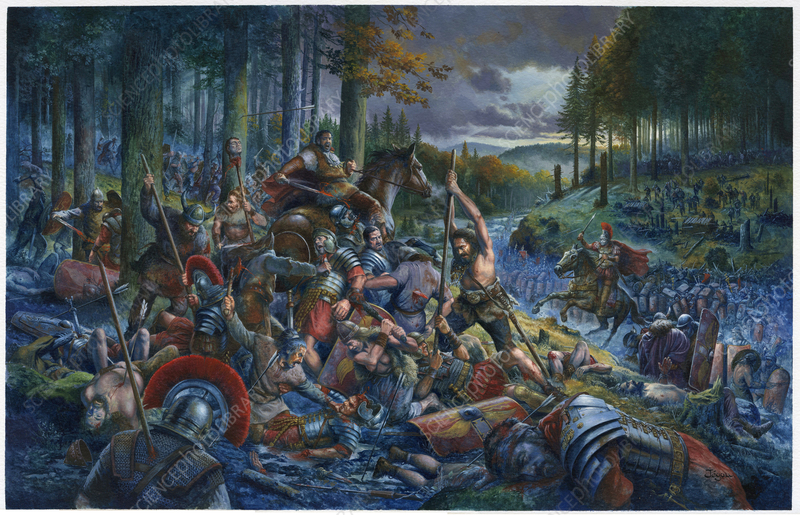
A new Netflix TV series, Barbarian, launched its 2nd season on October 2022. Based on a rating from IMDB, it received a solid rating of 7.2/10. Long story short, this series tells us the story of a young man from the Germanic Cherusci tribe. Along with his brother, he joined and served in the Roman military for a few years. Before returning back to his hometown, he received Roman citizenship. During his time serving in the army, he learned Roman politics and tactics, which allowed him to his future military campaign against the Romans.
Is the story of Arminius true?
The story of Arminius is indeed true. He was born in 17 or 16 BC. He came from a Germanic tribe called the Cherusci tribe, with a living area between the modern cities of Hannover and Osnabrück. During 12 BC, the Romans expanded their territory as far as the Elbe riverbank. Some Germanic tribes including the Cherusci surrendered to the Romans. This signifies the newly claimed land as a new Roman province called Germania Magna.

To secure control of the new territory, the Romans took some children as hostages, which will allow the Romans to raise them. When these children grew up, the Romans will be sent them back to their tribe and will choose them as the tribal chief. In the majority of cases, this method considered successful for the tribes to be loyal to the Roman emperor. However, It did not work well for Arminius’ case.
During the Roman expansion in 12th BC, The Romans took Arminius and raised him in Rome. Even though Arminius considered to be a barbarian by birth, He gained Roman citizenship. He received prime education where he learned about Roman politics and military strategy. In addition, he also served in the Roman legion and actively participated in Roman military expansion in the Balkan region. After all his success in Rome, Arminius returned to his tribe and started to plan the uprising against the Romans.
What is the Significance of Arminius?
Arminius’ ambus at Teutoburg Forest
Arminius’ most significant achievement occurred after the great battle of Teutoburg forest. This forest was located 20 km from the modern city of Osnabrück. In this battle, The united Germanic warriors successfully annihilated 3 Roman legions in only 2 days. The battle started when 15,000-strong Roman legions marched to their base to prepare for a long winter. Quintilius Varus, former governor of the Roman province of Syria and Africa, was leading this march.
In order to reach their base, the Roman Legions needs to follow narrow paths that snake through the forest. The condition of the forest itself considered being a disadvantage to the Romans. Falling trees, violent rain, slippery, and muddy ground created a big problem for the Romans. The Germanic tribes know the battlefield too well. While the Romans were struggling with the terrain that bogged them down, Arminius’ warriors implemented a “hit and run” tactic. Initially, these Roman legions able to march and withstand all the small ambushes by the Germans. Varus and his exhausted legions keep on pushing and arrived in a place called Kalkriese.

This place considered to be a perfect place for an ambush, it possesses a narrow corridor with a steep hill on the south and a marsh on the north. In addition, the Romans would not be able to implement their battle formation properly. Due to narrow spaces, the Romans found themselves trapped in a bottleneck with a small chance to escape. The Romans tried to break through the encirclement, but they failed. With huge casualties and no chance of running away, Varus decided to commit suicide. In the end, only a handful of his armies were able to escape the slaughter.
The End of Roman Domination
This defeat signifies the end of Roman expansion behind the Rhine river. The Roman was weakened and need time to replenish all their losses. The Roman’s reputation of being invincible was completely destroyed. In only a few nights, Emperor Augustus lost more than a tenth of his imperial army. According to the Roman historian, Emperor Augustus himself was really shaken by this news. He stood banging his head on a palace wall and repeatedly shouting “Varus, give me back my legions!”
According to some historians, the battle of Teutoburg forest considered being one of the worst defeats in Roman military history. Emperor Augustus convinced that the defeat in Teutoburg as a warning that his empire reached its maximum potential. At the end of his life, he told his successor not to extend it anymore. The Roman expansion was temporarily stopped for a few decades after this defeat. Augustus’ successors finally decided to stop all efforts to annex and expand the territory beyond the Rhine river. In addition, they decided to leave this place once and for all. The Rhine river would also remain to be a buffer zone between Germanic and Latin cultures.
Correlation of Arminius and the rise of German Nationalism

Arminius’ legacy help to create a sense of national pride for Germanic people and establish a common identity. During the unification of Germany back in the 19th century, a lot of politicians hailed Arminius as the symbol of unity and freedom. In 1838, a massive construction of Arminius’ statue took place, known as the Hermannsdenkmal. The statue can be seen standing near Detmold in the Teutoburg forest. It took another few decades to complete the statue, which completed in the wake of the German victory over France in the Franco-Prussian war (1870-1871). After its completion, the tall monument attracted major tourist attractions ever since.
However, following the rise and fall of Nazi Germany during the second world war, Arminius became a lesser-known figure in West Germany. On the contrary, people coming from East Germans regarded Arminius as a revolutionary, liberator, and unifier figure. In a way, what happened during the second world war has tainted Arminius’ heroic tale. Even these days, people’s opinion toward Arminius is divided.
Today, some German nationalists still use the tale of Arminius and the Teutoburg forest as an ideological rallying point. It gives them validation that this battle becomes a foundational moment for German civilization and proof of the Germanic people’s superior pedigree at an early age. To this day, Arminius and his battle legacy remain the source of inspiration for the far-right extremists who regularly make a pilgrimage to Hermannsdenkmal. Back in 2009, the far-right National Democratic Party of Germany or NPD organized a march to commemorate the battle.
Further Read
https://www.badancient.com/claims/survivors-teutoberg-forest/
https://www.thenationalnews.com/uae/they-need-a-hero-1.528707
